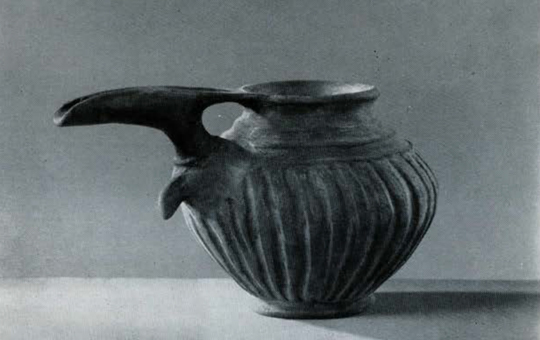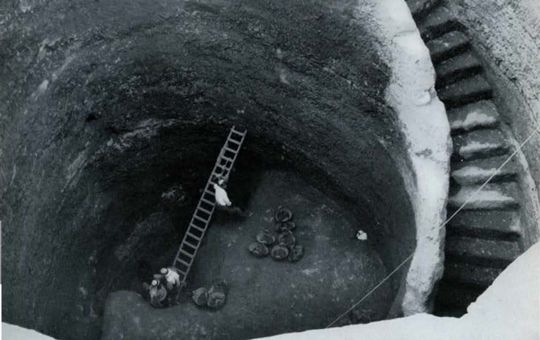Near East Section

Vol. XXII / No. 2
By: Robert H. Dyson, Jr.
Iran 1957: Iron Age Hasanlu
During the summer of 1957, excavations at Hasanlu, near the south shore of Lake Urmia, were carried out as part […]
View Article
Vol. XXII / No. 2
By: James B. Pritchard
A Second Excavation at Gibeon
At the beginning of the 1957 season at el-Jib, the site of the biblical Gibeon, we had a modest and […]
View Article
Vol. XXI / No. 1
By: Robert H. Dyson, Jr.
Iran: 19561
April is the Persian month. The plane wings over the high mountains ringing the plateau and finds them mostly free […]
View Article
Vol. XXI / No. 1
By: James B. Pritchard
Discovery of the Biblical Gibeon
Ancient Palestine, a small area equivalent to that of Sicily or Vermont, has had in the course of sixty-seven years […]
View Article
Vol. XIX / No. 4
By: Samuel Noah Kramer
Tales of Sumer: Man's Oldest Myths
INTRODUCTION The summer of 1955 saw one of the most unusual exhibits in museum history on exhibit in Philadelphia’s University […]
View Article
Vol. XVIII / No. 3
By: Schuyler Cammann
Carvings in Walrus Ivory
When anyone mentions walrus ivory, we immediately think of small Eskimo carvings from the northernmost parts of the world. The […]
View Article
Vol. XVII / No. 4
By: Froelich Rainey
Afghanistan
The reconnaissance described here has been followed in the summer of 1953 by the University Museum Expedition to Afghanistan under […]
View Article
Vol. XVII / No. 2
By: Samuel Noah Kramer
Anatolian Archaeology: Two Outstanding Turkish Excavations
A "Fulbright" in Turkey
October 29th of next year will mark the thirtieth anniversary of the birth of the Turkish Republic. On that day, […]
View Article
Vol. XVII / No. 2
By: Samuel Noah Kramer
Law and Love, A Hymn, A Prayer, and a Word to the Wise: A "Fulbright" in Turkey
In order to illustrate concretely the character of the contents of some of the material copied during the Fulbright year […]
View Article
Vol. XVII / No. 2
By: Samuel Noah Kramer
Work Done: A "Fulbright" in Turkey
Upon arrival in Istanbul, I called immediately upon Mr. Aziz Ogan, the Director of the Archaeological museums of that city, […]
View Article
